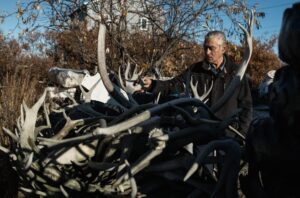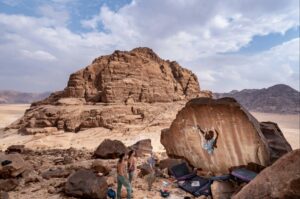Thanks to Albert Kahn, we know what many ancient countries looked like before the Age of Tourism
In the early 20th century, an unlikely cultural hero — a banker named Albert Kahn — had the foresight to see that vibrant ancient cultures were in danger of vanishing. So he undertook a monumental photographic project to capture those customs doomed to disappear over time.

Kahn’s visionary project spanned 22 years and was named Archives of the Planet. Between 1909 and 1931, he sent photographers to almost every continent to record what they witnessed on the most practical photographic medium of the time, autochrome plates. The 72,000 images captured a world without foreign influence; a slice of a simpler time before those coming changes landed.
Archives of the Planet is a time capsule of the entire world, but the most important images came from India, Japan, Vietnam, and Cambodia. For those countries, in particular, the images preserved many aspects that simply no longer exist.

At the time, much of South Asia was struggling against French rule. Cambodia had been under French power since 1863, and northern Vietnam since 1884. The rest of Vietnam joined neighboring countries to form Indochina in 1887, hoping that its larger size might protect it from western colonization and the loss of its ancient traditions.
In this era before jets, travel from Europe to Asia involved weeks aboard an ocean liner. Angkor Wat — the focus of Kahn’s Cambodia correspondent in 1921 — barely saw any visitors compared with today, where hundreds of tourists gape daily at its nubbly spires. Archives of the Planet captured the teachings and meditations of monks in these ancient temples, long before tourism.
Traditional Cambodian dances provided a link between human and divine rather than being simply a form of entertainment. The Cambodian project filmed this, too.
In Vietnam, Archives of the Planet revealed a poor, mostly rural country. Most people were slaves to rice production, but for families not fortunate enough to own arable land, begging was a common profession.

The photographs captured explicit details of the Vietnamese culture. Bright colors on robes represented social classes, the elevated seat of a teacher demonstrated authority, and long fingernails symbolized status. Nowadays, Saigon, now Ho Chi Minh City, is a bustling hive of modern activity with no hint of these.
At the time, India was 60 percent under British rule, and Maharajas led the remaining empires. Kahn’s India correspondent witnessed the 50th jubilee celebrations of Jagatjit Singh, the Maharaja of Kapurthala, offering a rare insight into the vanishing Maharaja lifestyle.

Jagatjit Singh, Maharaja of Kapurthala. Photo from Madras Courier
On the outside, Maharajas basked in the glory of royalty, but in truth, they had already forfeited their power. They lost their place in Indian culture altogether when Mohandas Gandhi’s non-violent movement to free India from the British succeeded in 1947.
Kahn’s interest in Asia extended beyond that of a colonial European. Driven by curiosity and a desire for visual preservation, he sent French photographer Roger Dumas to Japan in 1926 to capture the shrines, festivals, parades, and traditional samurai celebrations.
The Tokyo of that era was an emerging, sophisticated city that had never been colonized, yet European influences had already begun to roil the Land of the Rising Sun. By chance, Dumas’ visit coincided with a turning point in Japanese history: the death of an Emperor.
Kahn’s project might seem like an unlikely one for a banker, but he was largely influenced by his own traumatic past.
As a teen, the Germans invaded and annexed his home of Alsace in northeastern France. He fled to Paris, where he became a successful banker while also studying philanthropy.
Witnessing changing markets and improved technology urged him to begin recording, and the influential social circles in which he moved allowed him to make the appropriate arrangements. His first-hand experience of how easily cultural upheavals could swallow a place made Kahn certain that his preservation project was important.
When World War I began, he was just days into his France recording and was able to continue by liaising with the military. His project ended abruptly in 1932 when Kahn went bankrupt.
Since 1986 –- some 46 years since his death –- his former Paris mansion has become a museum to the banker’s vision. A former garden area displays his vast collection of photographs and films.
In 2019, the Archives of the Planet collection of 72,000 autochromes was made available to everyone, in its entirety, via the internet.






